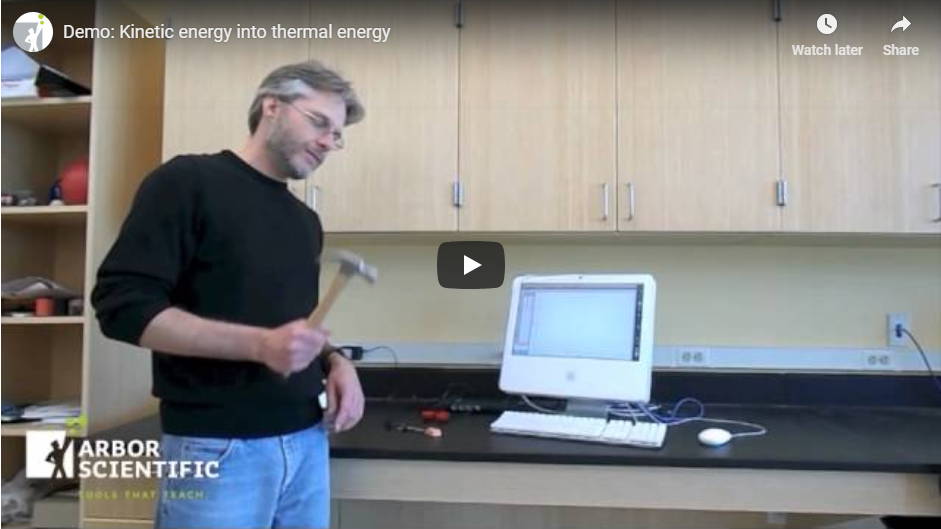Featured Products
Kinetic Energy Into Thermal Energy
Watch how silly putty and simple steel spheres can be used to demonstrate the conversion of kinetic energy into thermal energy! (And you thought Silly Putty was for copying comics from the newspaper!)
One of the most important concepts in physics is the principle of energy conservation, especially the idea that energy can change forms and be transferred from one object to another. An important application of this idea is that kinetic energy can be transferred to heat, which is just another form of energy. One way to demonstrate this idea is to have students simply rub their hands together, showing that friction transfers energy into heat. However, it may be less obvious to students that impacts also generate heat, since the role of friction may not be as clear when the objects are not actively rubbing together. One easy way to demonstrate this is with a set of Colliding Steel Spheres. When I use this demo in class I ask for a "brave student volunteer."
I have the student volunteer hold a sheet of paper vertically and then I dramatically smash the spheres together with the paper in between. A small hole results and I have the student examine the hole, in particular noticing that there is a smell of burning paper. This clearly shows the class that the kinetic energy of the moving spheres is changed into heat energy when the spheres collide. I then typically make several more collisions to drive home the point, and sometimes allow students to try it for themselves.
Another dramatic and visual way to demonstrate this concept uses silly putty, a hammer, and a temperature probe connected to computer data acquisition system. Simply embed the temperature probe inside the silly putty, start the data acquisition, let the temperature come to equilibrium and then smash the hammer down on the silly putty. You should then see a rise in temperature recorded on the screen, again showing how kinetic energy is transferred into heat energy, resulting in a rise in temperature of the silly putty.
Another great way to show energy conservation, and connect to thermodynamics concepts, is the Fire Syringe. This is basically a piston that you can use to rapidly compress a column of air with a bit of cotton ball; the rapid compression heats the air and ignites the cotton ball. This again is an illustration of converting kinetic energy into heat; you can also present this in the context of the idea gas law, where the compression increases the temperature. A couple of things to watch out for when using this device: the seal needs to be good, so the o-rings should be lightly lubricated and when you compress the piston it should bounce back rapidly; use a small bit of cotton ball and pull it apart so there is a lot of surface area to heat. You need to give the piston a quick compression, and it helps if the cotton fibers are near, but not sitting on, the bottom of the column.
These demos are visual and, for many students, surprising, and can really drive home the idea that energy can change forms and particularly that kinetic energy can be changed into heat energy.
Brian Thomas is an Associate Professor of Physics & Astronomy at Washburn University's College of Arts & Sciences His Career Accomplishments include but are not limited to: Principle Investigator on a $500,000 research project funded by NASA's Astrobiology program, in collaboration with the Smithsonian Environmental Research Center, author or co-author on approximately 20 peer-reviewed articles. Invited speaker for several international conferences. His work has been featured in news articles, as well as in several television documentaries.
washburn.edu/our-faculty/brian-thomas


